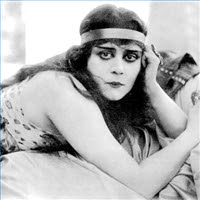Remember double features? In the world of the less-than-5 minute attention span and no time for anything, it was perfectly normal to go to the movies on a Saturday afternoon for almost 4 hours and see a double feature. Most times, the main feature was the one you wanted to see and the second feature was either a pleasant surprise, tolerable, or a big enough stinker that you didn't feel guilty walking out on. But every once in a while, you were treated to 2 terrific movies; one that you and your friend discussed on a slow walk home.
As soon as I was old enough to steal my big sister's movie magazines I was entranced by Natalie Wood. So, when "Gypsy" hit the theaters in 1962 (probably 1963 in my town), my BFF Jean Marie and I got permission to see it and stay for the second feature, "The Music Man," if we so desired.
I pretty much loved "Gypsy" (though it took me YEARS to get over Rosalind Russell's Mama Rose). Jean Marie and I agreed that Natalie was gorgeous and the music terrific (it remains one of my favorite scores). We agreed to give "The Music Man" a shot, although it looked rather old fashioned, knowing that we could always leave if we didn't like it. Approximately 2 hours later I had forgotten about Gypsy Rose Lee because I was madly in love with Professor Harold Hill as played by Robert Preston.
Movie crushes come and movie crushes go. Actors and characters we once loved morph - seemingly overnight - into ones we despise or at least are ashamed to admit we had a thing for (I'm still not owning up to a crush on Dean Jones). But my love for RP has never wavered.
Naturally, I needed to know everything about my new love and I discovered that he had a reasonably successful, but unspectacular, movie career before migrating to the Broadway stage and achieving true star status there as Harold Hill in Meredith Wilson's "The Music Man." It is said that Jack Warner wanted either Frank Sinatra or Cary Grant to star in the movie version, but that Wilson held out for RP - and boy, am I glad he did.
As con man Professor Harold Hill, RP charmed the socks off of me (and apparently everyone else who saw the movie). He owns the role and now, as then, I would believe every word he said and follow him anywhere. And may I add that I would not keep him waiting at the footbridge. (Oh, I loved Shirley Jones, Ronnie Howard, Pert Kelton and Hermione Gingold, too, but this is not about them.)
Another RP movie that I love him in is "All The Way Home."
Another RP movie that I love him in is "All The Way Home."
Based on James Agree's "A Death in the Family," this 1963 tells the story of the sudden and accidental death of a father and the affect if has on those who loved him, especially his widow and young son. As the loving father, RP is vibrant and charismatic, and though I love this quiet, compelling film, it all seems empty once he is gone. Just like the lives of those left behind.
After Professor Hill, my favorite RP performance is as Toddy, the gay Parisian cabaret signer who befriends Victoria (aka Victor) in Blake Edward's "Victor/Victoria".
Now, Robert Preston is 100% a manly man. Throughout his career he is nothing less than handsome and virile. And so he is here, just a bit gayer.
It is a charming, bold and hilarious performance and it is one of my major pet peeves that he did not win a best supporting actor for his work in this film.
Now, Robert Preston is 100% a manly man. Throughout his career he is nothing less than handsome and virile. And so he is here, just a bit gayer.
It is a charming, bold and hilarious performance and it is one of my major pet peeves that he did not win a best supporting actor for his work in this film.

Some of my other favorite Robert Preston films are:
Act One (before "The Music Man" success):
"Reap the Wild Wind": he and Susan Hayward share a lovely romance
"This Gun for Hire": Veronica Lake's guy, but she has a soft spot for Alan Ladd
"Tulsa": Man enough for a wildcat Susan Hayward
Act Two (after "The Music Man" success):
"The Dark at the Top of the Stairs": commanding as the head of a troubled household
"Junior Bonner": One of my favorites - he wrestles the screen from Steve McQueen's rodeo rider. They are marvelous together.
"Semi-Tough": as team owner Big Ed Bookman, RP gets to play large & loud and he's wonderful.
"S.O.B.": A funny performance in a very funny Blake Edwards film.
I was fortunate to see Robert Preston on stage in "I Do! I Do!" and he was magnificent. I am truly sorry that I did not get to see him, along with Bernadette Peters in the failed "Mack and Mabel," Jerry Herman's musical about Mack Sennett and Mable Normand. Oh, how I wish!
I don't think Robert Preston ever gave a bad performance. His personality was larger than life with an enveloping warmth. Maybe the stage was his true medium, but I am grateful for his cinematic presence and I treasure the joy he brings to the screen. He was always vibrant, vital and very much the male of the tale.























.jpg)
.jpg)



.jpg)













